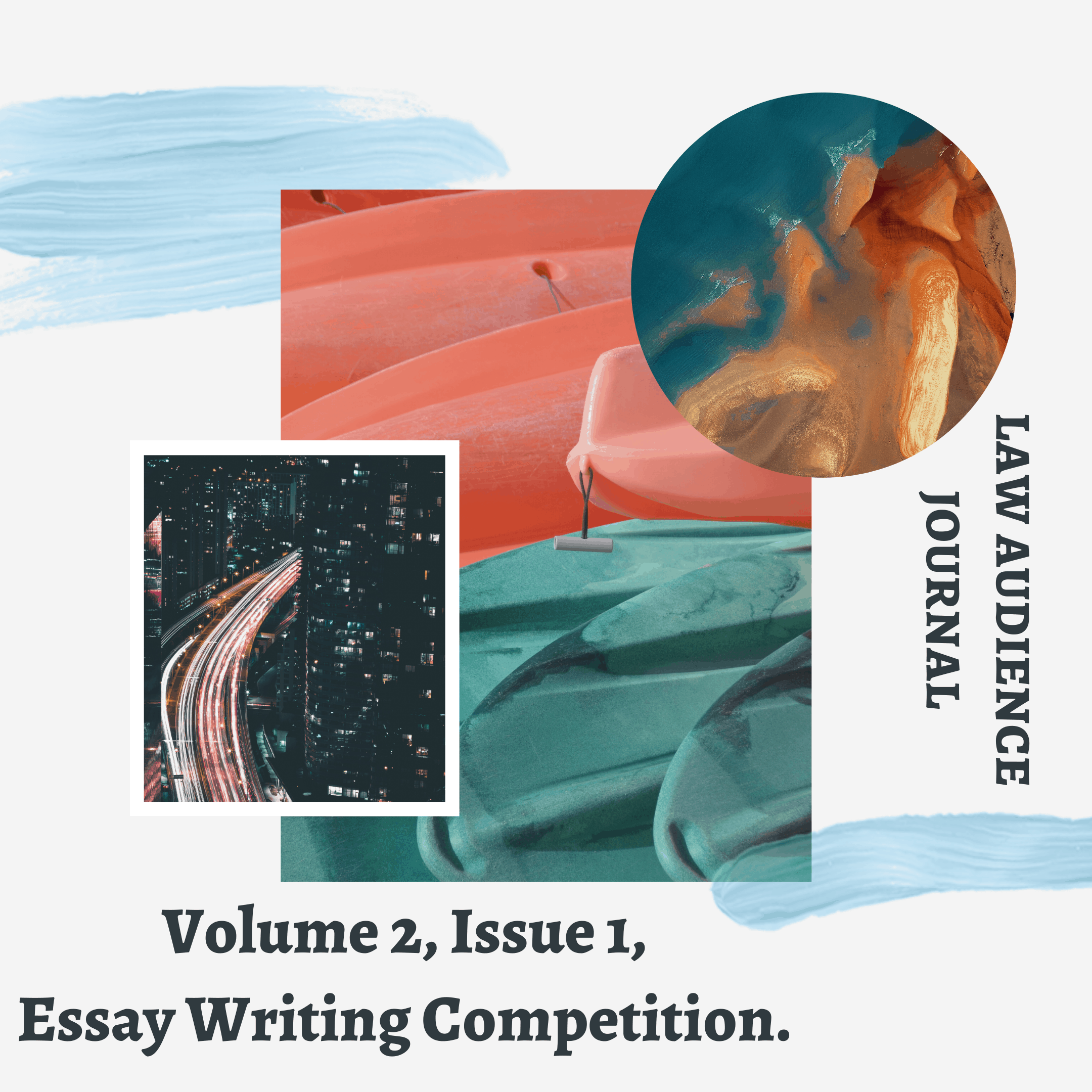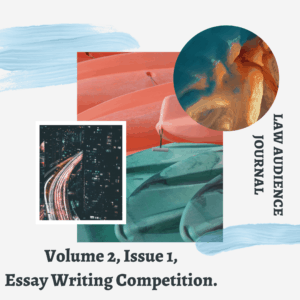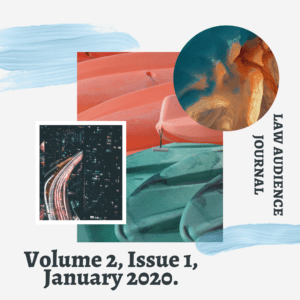AUTHORED BY: Ms. Arsheiya Munjal (B.com LL.B (Hons), Co-authored by: Mr. Nachiket Chawla (BBA. LL.B (Hons), Amity University, Noida.
I. ABSTRACT:
The State of Jammu and Kashmir came into existence when Ashoka, the Maurya emperor founded Srinagar. Subsequently, Mughal emperor Akbar took over rule from Ashoka. Soon after that, the East India Company invaded India. They got stronger by the day, and sold the Dominion of Jammu and Kashmir to Dogra King Gulab Singh. Everything was peaceful in the State until 1947, when India was divided into two countries – India and Pakistan. Due to this, Maharaja Hari Singh, the ruler of Jammu and Kashmir at the time, signed a standstill treaty with both the countries which held that the existing administrative arrangements between the princely States and the dominions would continue without any changes until new agreements could be formed.
However, Pakistan breached this agreement in October, 1947 by attacking the State in order to conquer it. When Maharaja Hari Singh failed in his attempts to fight back, he asked for help from India. India did not intercede until the Instrument of Accession was signed, which officially acceded Jammu and Kashmir over to India.[1] On October 17, 1959, Article 370 was added in the Constitution of India on a temporary basis. The article comes under Part XXI of the constitution, which is directed towards Temporary, Transitional and Special Provisions, wherein Article 370 throws light on the same with respect to the state of Jammu and Kashmir.[2] The article not only exempts Jammu and Kashmir from having their own constitution, but also mentions that the Parliament needs the State government’s concurrence for applying all laws except Defence, Foreign Affairs, Finance and Communications.[3]
This essentially means that the State’s residents are governed by a separate set of laws. These unique laws include those regarding citizenship, ownership of property and fundamental rights. Indians citizens from other States cannot purchase land or property in Jammu and Kashmir as a result of this provision. Article 35A of the Indian Constitution was stemmed out of Article 370 and gives powers to the State assembly to define certain rights and privileges[4], their definition of a permanent resident of the State being a prime example of this.
II. INTRODUCTION:
During a Lok Sabha meeting in 1952, Jawaharlal Nehru stated that what the Constitution says is not as important as what the people of Kashmir want, “if the people of Kashmir do not want it, it will not go there” He further stated that the alternative is “compulsion” and “coercion” and ended by saying that “we have fought this fight in the hearts and minds of men and women of that State of Jammu and Kashmir”.[5] The Jammu and Kashmir Constitution, adopted on November 17, 1956, defines a ‘permanent resident’ as a person who was a State subject as of May 14, 1954, or has been a resident in the State for 10 years on that date, with a legally acquired property.[6] Non-permanent residents, on the other hand, could not acquire immovable property; get government employment, scholarships or aids provided by the Jammu and Kashmir government. The marginal note accompanying Article 370 states that the article is “Temporary”. Furthermore, Article 370 sub-clause (3) specifies that the article can only be abrogated by the public notification of the President.[7] However, for the President to do this, the recommendation of the Constituent Assembly of the State of Jammu and Kashmir is deemed necessary. Since the Constituent Assembly dissolved itself in January 1957 before taking a decision about abrogating the Article[8], the status of Jammu and Kashmir has been in question. On 5th August 2019, the Government of India, which is currently led by the Bharatiya Janata Party (BJP), divided Jammu and Kashmir into two Union Territories as President Ram Nath Kovind signed a resolution dissolving Article 370.[9]
Article 370(1)(d) states that the President’s orders apply to all articles of the Constitution except Article 1 and Article 370[10]. For the President to make an amendment regarding the article, he would have to consult with the government of the State. However, since BJP withdrew their alliance with the local Kashmiri party, the State party collapsed, leaving the State with no government and subsequently within the rule of the president.[11]
The President exercised his power and modified Article 367 of the Constitution, which is the interpretation clause. Under Article 367 (4), he added a sub-clause (d) which declares that as under Article 370(3), “constituent assembly” must mean “legislative assembly”.[12] Prior to this, under Article 370(3) the recommendation of the Constituent Assembly of Jammu and Kashmir was necessary to abrogate the article. Since the constituent assembly was dissolved in 1957 without making a decision, the President could not exercise his powers. However, with this change, the President could abrogate Article 370 with the recommendation of the legislative assembly. Since the State was under the President’s rule and there was no current legislative assembly, he was able to abrogate Article 370 without anyone’s consultation.
As expected, this move sparked a nationwide debate; while many people are in favour of this change; many experts are calling this move illegal and unconstitutional, which has been analysed to the best of our abilities. Factors such as the view of the judiciary, the constitutionality of the move and the matter of international disputes have been taken into consideration while writing this research paper.
III. VIEW OF THE JUDICIARY:
The case of Kumari Vijayalakshmi Jha v. Union of India, was heard by the High Court of Delhi in 2017. The petitioner claimed that a separate Constitution for the State of Jammu and Kashmir under Article 370 was “unconstitutional” and “arbitrary”, since it went against the “supremacy of the Constitution of India and is contrary to the dictum of ‘One Nation, One Constitution, One National Anthem and One National Flag’”.[13] The petitioner also claimed that the life span of Article 370 ended when the Constituent Assembly of the State dissolved itself. The judges referred to two cases heard by the Supreme Court which stated that Article 370 is not temporary.
The first case mentioned was State Bank of India v. Santosh Gupta. In this case, the Supreme Court said that like Article 370, Article 369 also has a marginal note stating it as a temporary article, but the time period of that article has been increasing with time, from 5 years, to 10 years, to 15 years and so on. Similarly, the fact found was that there was no prescribed time limit for Article 369 and hence for Article 370 as well.[14]
Furthermore, the Court also stated that Article 370(3) could not transpire due to the absence of the constituent assembly of the State, because of which the article could not be abrogated as the President would be unable to fulfil the mandatory provisions of the article.
Secondly, the High Court referred to the case of Sampat Prakash v. State of Jammu and Kashmir, 1958. The petitioner held that Article 370 should be held temporary as it ceased to exist once the constituent assembly was dissolved. However, N. Gopalaswami Ayyangar, a political leader and a member of the drafting committee of the Constitution stated that the conditions of Jammu and Kashmir were special, which is why it needed special treatment.[15] The fact found by the Court was that the constituent assembly had recommended that the article should be operative with the one modification which was already made.
Furthermore, it was said that Article 370(2) does not state that the article should be abrogated after the constituent assembly dissolved itself, which is why the same cannot be assumed.
Hence, in the High Court of Delhi, Judge Jayant Nath stated that even though the marginal note in the Constitution states that it is a temporary article, it will continue to happen until Article 370(3) takes place.[16] While this does not say that Article 370 is permanent, it does say that Article 370(3) must occur for the abrogation of the article.
The Central Government’s decision to abrogate Article 370 did split a lot of public opinions, owing to its validity status. One side claims that the President of India, Ram Nath Kovind acted out of his reach when he abrogated Article 370 on the Parliament’s advice. They back their argument with the fact that according to Article 368, the basic structure of the Constitution cannot be changed.[17]
Presently, the Supreme Court has been on the receiving end of numerous petitions.[18] This comes as no shock, as the Government knew they would have to defend this move to the Judiciary. Both sides have their own arguments to back their respective claims, and the legitimacy of the Presidential Order is sure to be an integral part of it.
IV. THE CONSTITUTIONALITY:
The abrogation of Article 370 can be seen as an attempt by the President to indirectly amend the article by himself. This can be deemed as a grey area, as nobody is sure about which provision should prevail – While Article 370(3) states that the constituent assembly must recommend the change, Article 367(4)(d) states that the constituent assembly must mean the legislative assembly.
In the case of Kesavananda Bharati v. Union of India, it was stated under the basic structure doctrine that any Constitutional function should not “transgress the limits prescribed by the Constitution”[19], which may seem to be the case here. Furthermore, the Principles of Interpretation of Statutes clearly states that the meanings of statutory provisions must be derived from its own wordings unless there are omissions or it is unclear.[20] These principles are decided on by the Supreme Court as they give verdicts which decide how articles and statues must be read. This insinuates that Article 367(4)(d) should not have been able to override Article 370(3), further meaning that Article 370(3) had not taken place, which should have made the abrogation unsure as it went against the past judgement of the High Court.
Many experts are questioning the legality of tweaking Article 370(3). Supreme Court advocate Akhil Sibal has questioned if this “fulfils the requirement” and has called it a “legal fault line”[21]. Constitutional lawyer Malvika Prasad has questioned how the government of Jammu and Kashmir’s opinion has been taken since the State had been under the President’s rule for more than a year. Moreover, Gautam Bhatia, the famous Supreme Court lawyer has called this move “unconstitutional” and Mr. P.Chidambaram, former Union Minister of Finance has stated that it is “beyond his comprehension”.[22] Challenging the move of the President will be difficult as the given scenario is totally unprecedented. While many princely States have come under the government’s rule post-independence, they were all given the title of a State, and never has a State been deduced to being a Union Territory in the history of India.
V. GLOBAL CONSEQUENCES:
Since Kashmir is a disputed area which both Pakistan and India claim, the United Nations has been maintaining it’s institutional presence in the conflict. On August 8, 2020, the UN Secretary-General announced a statement concerning the matter. “The position of the United Nations on this region is governed by the Charter…and applicable Security Council resolutions”, said the statement. According to the UN charter, “The Secretary-General also recalls the 1972 Agreement on bilateral relations between India and Pakistan also known as the Shimla Agreement, which states that the final status of Jammu and Kashmir is to be settled by peaceful means”. [23]
Unsurprisingly, Pakistan has fully rejected the abrogation of Article 370. Pakistan declared it as a violation of the United Nations Security Council (UNSC) Resolutions since Kashmir is an “internationally recognised dispute”[24]. Pakistan could approach the UNSC, which exercises jurisdiction under Chapter 6 and 7 of the UN Charter over both “disputes” and “situations” which are likely to endanger international peace and security. Article 33 of Chapter VI of the UN Charter states that the parties to a dispute, which could disrupt international peace must seek a solution by negotiation, enquiry, mediation, arbitration or other peaceful means.[25] For long, Pakistan refused to acknowledge the presence of the accession of Jammu and Kashmir to India. This constant effort was jeopardized when the abrogation of Article 370 led the Imran Khan Government to condemn this move, thus indirectly admitting to the validity of this article. This could be taken as an acknowledgement that the State is rightfully and legally belonging to India, which is why Pakistan does not have a locus standi. This was a stand that Pakistan had never taken in public view.[26]
Theoretically, the only international dispute arising out of this situation is that of India and Pakistan. Pakistan has slammed the Indian Government’s decision to abrogate article 370, and they can approach the United Nations for the same.
VI. CONCLUSION:
The analysis that was conducted gave some insightful information on Article 370 and it’s unprecedented scraping. In essence, the President required a recommendation from the constituent assembly of Jammu and Kashmir in order to abrogate Article 370. His amendment of Article 367 corresponded for the constituent assembly to mean the legislative assembly, which in turn corresponded to the Governor, which is how the abrogation was concluded. The Supreme Court judgements are given before the abrogation state that Article 370(3) must be fulfilled for the article to cease to exist.
However, many experts believe that the same has not been done, as the move is being called “unconstitutional” and a “legal fault line”. Landmark cases such as Kesavananda Bharati v. The Union of India, and the Principles of Interpretation of Statutes is being used against the abrogation of the Article, as they state that the phrase “constituent assembly” in Article 370(3) cannot be replaced by the phrase “legislative assembly”.
With this abrogation, the misuse of Article 370 by Pakistan, Politicians, and Bureaucrats will also be put to an end. Furthermore, since more people can buy land in Kashmir, its resources will start getting more utilized. More investment and a higher inflow of income and employment are expected, which should lead to a higher standard of living and ease of doing business as well.[27] This way, areas other than tourism should also bring income for Jammu and Kashmir and the economy is expected to boom.
Furthermore, Pakistan, who has finally accepted the presence of Article 370 due to its scraping, is preparing to go to the United Nations since this is an internationally recognized dispute and will further hold India culpable of endangering international peace and security. As the Pakistani Government prepares itself to contest India on more than one front regarding the Kashmir issue, which has just been amplified due to the abrogation of Article 370, India must be wary of prolonging this dispute any longer.
It is clear that a solution must be found, for both India and Kashmir to recognize and reach their full potential. Failure to resolve international disputes has historically led to bloodshed and violence, and the long-standing rivalry between the 2 nuclear nations could spell a possible disaster on a global scale. Hence, it is very important for the Supreme Court to make a decision on the petitions regarding the scrapping of Article 370, not only because many people are relying on the Court to give a fair judgement, but also because this will set a precedent for any such future scenarios the country may pose.
[1] Prabhash K Dutta, How Kashmir got Article 370: History retold – News Analysis News, India Today (Aug. 8, 2019 12:45 PM IST), https://www.indiatoday.in/news-analysis/story/kashmir-situation-article-370-history-1578495-2019-08.
[2] INDIA CONST. art. 370.
[3] What is Article 370, Business Standard, https://www.business-standard.com/about/what-is-article-370.
[4] Explainer: What is Article 370?, The Hindu Business Line (2019), https://www.thehindubusinessline.com/news/national/explainer-what-is-article-370/article28822446.
[5] Sanjay Hegde & Pranjal Kishore, Kashmir: Why amendments to Article 370 may not withstand judicial scrutiny, Business Standard (Aug. 06, 2019 02:42 PM IST) https://www.business-standard.com/article/economy-policy/kashmir-why-amendments-to-article-370-may-not-withstand-judicial-scrutiny-119080600557_1.html.
[6] The Constitution of Jammu and Kashmir, 1956 (India).
[7] INDIA CONST. art. 370, cl. 3.
[8] Kashmir special status explained: What are Articles 370 and 35A?, Al Jazeera (Aug. 05, 2019), https://www.aljazeera.com/news/2019/08/kashmir-special-status-explained-articles-370-35a-190805054643431.html.
[9] Shaswati Das, Article 370 scrapped, Jammu & Kashmir to be carved into two Union Territories, Livemint (Aug. 05, 2019 04:45 PM IST), https://www.livemint.com/news/india/jammu-kashmir-amit-shah-moves-rajya-sabha-to-scrap-article-370-1564984999538.html.
[10] INDIA CONST. art. 370, cl. 1, sub cl. d.
[11] = Jeet H Shroff, Four reasons why the Presidential Order on Kashmir is not Kosher yet, The Hindu (Aug. 06, 2019), https://www.thehindubusinessline.com/opinion/three-reasons-why-the-presidential-order-on-kashmir-is-not-kosher-yet/article28836245.ece.
[12] Laya Maheshwari, How the Indian Government changed the Legal Status of Jammu and Kashmir, Lawfare (Aug. 12, 2019 11:10 AM), https://www.lawfareblog.com/how-indian-government-changed-legal-status-jammu-and-kash
[13] Kumari Vijayalakshmi Jha vs Union Of India & Anr. (2017) W.P.(C) 9300/2015 (India).
[14] State Bank of India v. Santosh Kumar Gupta, (2016) 12237-12238 SLP (India).
[15] Sampat Prakash v. State Of Jammu & Kashmir & Anr. (1970) A.I.R 1118, 1970 SCR (2) 365 (India).
[16] Kumari Vijayalakshmi Jha vs Union Of India & Anr. (2017) W.P.(C) 9300/2015 (India).
[17] INDIA CONST. art. 368.
[18] Centre justifies Article 370 decision in Supreme Court, Livement (Nov. 11 2019 08:55 PM IST), https://www.livemint.com/news/india/centre-justifies-article-370-decision-in-supreme-court-11573485747301.html.
[19] Kesavananda Bharati Sripadagalvaru and Ors. v. State of Kerala and Anr., (1973) 4 S.C.C 225 (India).
[20] 3 Justice A.K. Srivastava, Interpretation of Statues pg. 2 (3d ed. 1995).
[21] India’s removal of Kashmir special status may face legal challenges: lawyers, Business Today (Aug 06, 2019 09:10 AM IST), https://www.businesstoday.in/current/economy-politics/india-removal-of-kashmir-special-status-may-face-legal-challenges-lawyers/story/370852.html.
[22] Furquan Ameen, Article 370: What are the legal questions, The Telegraph (Aug. 06 2019 02:13 AM IST), https://www.telegraphindia.com/india/article-370-what-are-the-legal-questions/cid/1695917.
[23] Namisha Jaiswal, UN Security Council discusses Kashmir, China urges India and Pakistan to ease tensions, UN News (Aug. 16, 2019), https://news.un.org/en/story/2019/08/1044401.
[24] Sohail Khan, Legal options in response to Indian move, The News (Aug. 07, 2019), https://www.thenews.com.pk/print/509659-legal-options-in-response-to-indian-move.
[25] = United Nations, Charter of the United Nations, Oct. 24, 1945 1 UNTS XVI, https://www.un.org/en/sections/un-charter/chapter-vi/index.html (Apr. 15 2020).
[26] Prabhash K Dutta, Why Pakistan’s campaign against Article 370 is good news for India, India Today (Sept. 9, 2019 4:54 PM IST),
https://www.indiatoday.in/news-analysis/story/kashmir-why-pakistan-s-campaign-against-article-370-move-is-good-news-for-india-1597205-2019-09-09.
[27] Impact Of Article 370, Indian Defence Review (Mar.15, 2018 )
http://www.indiandefencereview.com/spotlights/impact-of-article-370/.


